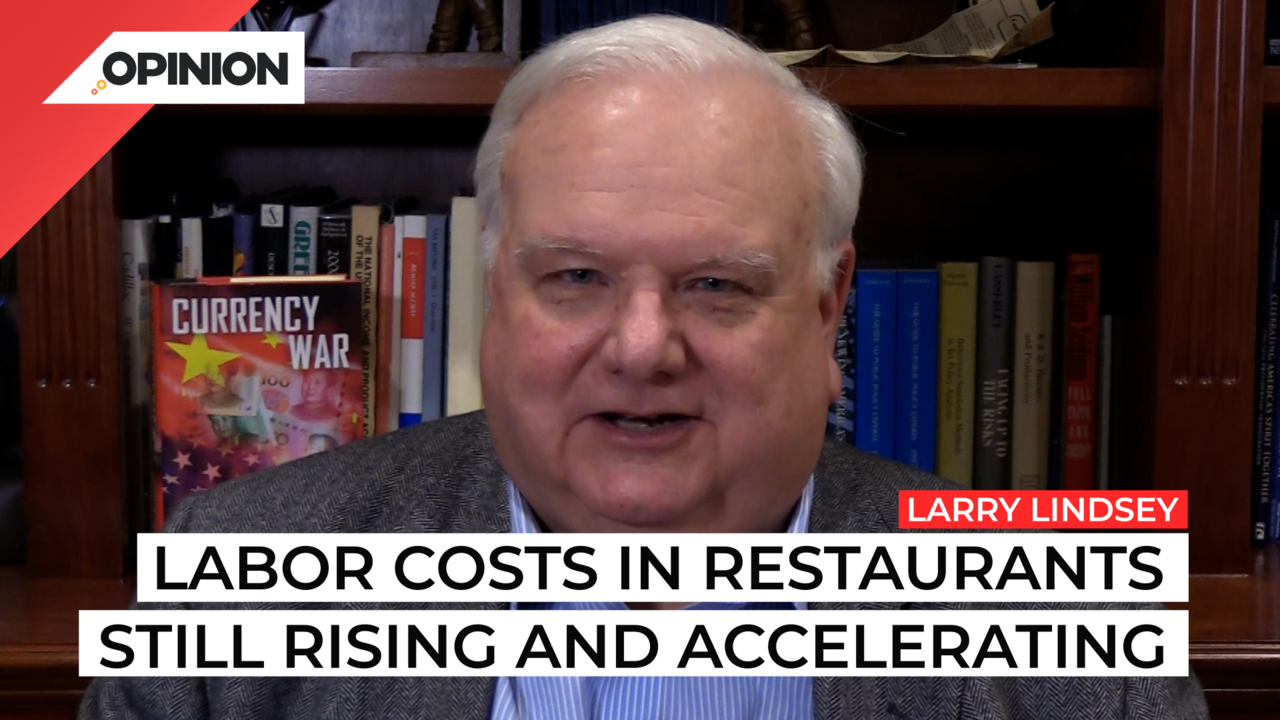
Commentary
-
Our commentary partners will help you reach your own conclusions on complex topics.
Lots of commentators told us last year and even early this year, that inflation is dead. It reminds me of an old joke. Nietzsche used to say God is dead. The responses, God said, well, Nietzsche is dead. The fact is, inflation is not dead. It’s coming down. But it’s coming down gradually. We recently got the report on the consumer price index. And if you just look at the numbers, it’s hard to detect a trend, here they are for the last seven months 0.4 0.6 0.8 0.5 0.5 0.6 0.5. If you can look at those numbers and come up with anything other than a trendless 0.5, which, by the way, is a little over 6% inflation at an annual rate, well, then good luck to you, you’ve got better eyesight than I do, you really have to squint. So there’s no trend. By the way, these are the service numbers, the core service numbers, and that’s what the Fed is looking at the most. Because services, unlike goods tend not to be so volatile. We know for example, that energy services were extremely volatile. And that caused a lot of the movement in the headline CPI. But although energy prices went up 29% In the first half of the year, they came down 26% in the second half of the year, and now it looks like they’re on the way up. So that’s why the Federal Reserve and I prefer to look at the services number. The other thing that happened was we had some transitory deflation in prices that had simply gone too high. One great example is used cars, cars were in short supply, it was so bad that used cars came to cost almost as much as new cars. Well, it now looks like used car prices are going to come down, who’s going to go up again. They the wholesale index comprised of cars that large used car dealers buy, and it’s published a series called The Mannheim series, have now turned around and are rising. Well, the other interesting things in the report, the one that caught my eye, was what’s happening to food. And the CPI looks at two different food numbers, food purchased at home, which fell from a 16% inflation rate at the first half of the year, to quote nearly a 7% inflation in the last half of the year. Now that’s food consumed at home. But food if you go out to a restaurant actually rose in inflation from 8% in the first half of the year to 8.4% of the second half. Well, if eating out costs more, but food inflation is going down. What’s the difference? The difference is services. And that means that labor costs for those in the restaurant industry and elsewhere, are still rising, and in fact, they’re accelerating. We also had the Producer Price Index come out. The headline number was seven tenths of percent, which was the highest since June. And the core lever level which excludes food and energy was point 6%, the highest since March. The long term trends are coming down. Our forecast for 2023 is 3.9% inflation. It’s down somewhat, but it’s nowhere near what the Fed wants, which is 2% inflation. So whether we like it or not the FOMC the Federal Reserve is going to have to keep tightening monetary policy. That means higher rates than we now expect. And it also means that they’re going to have to continue with their quantitative tightening.
-
Election 2024 will boil down to the Great Lakes states
Pollsters and pundits have been engaged in a long debate about how Biden or Trump might win the 2024 election, with much of their focus spent on the “swing state” electoral battlegrounds. While the winners of Alabama or California may be obvious, for instance, who wins Pennsylvania is a more difficult question. Watch the above… -
Why the Fed should consider Theory of Reflexivity when fixing policy
The Theory of Reflexivity, often used in the context of economics and financial markets, implies that investors don’t base their decisions on reality but on their perceptions of reality. This creates a feedback loop where investors’ perceptions influence economic fundamentals, which in turn alter investor perceptions. Watch the above video as Straight Arrow News contributor… -
Federal Reserve surpassed its own wildest expectations
On May 14, the U.S. Bureau of Labor Statistics released the most current producer price index (PPI) report, which showed an increase of 0.5% month-over-month in April. After the report’s release, U.S. Federal Reserve chairman Jerome “Jay” Powell said that while he believes the current policy rate is restrictive by many measures, the Fed needs… -
Polls give slight advantage to Trump in Electoral College
With the U.S. general election only six months away, leading candidates President Joe Biden and former President Donald Trump appear to be engaged in a very close contest. In their 2020 race, the winner of the Electoral College was ultimately determined by a relative handful of voters in just a few swing states, even though… -
College sports is big money but not everyone benefits
March Madness has wrapped up and Caitlin Clark has emerged as a household name as well as a wealthy student athlete. Earning over $3 million throughout her college career, her success stands in stark contrast to the previous notion that collegiate athletes shouldn’t earn anything beyond their scholarship. Straight Arrow News contributor Larry Lindsey examines…
Latest Opinions
-
Test post with no body copy
-
 Getty Images
Getty Images
How does dyeing the Chicago River on St. Patrick’s Day impact fish?
-
 Getty Images
Getty Images
Trapped Antarctic researchers reporting death threats from colleague
-
 Getty Images
Getty Images
Democratic Party’s favorability ratings drop to record low: Poll
-
 Getty Images
Getty Images
Israel accused of ‘genocidal acts’ against Palestinians in new UN report
Popular Opinions
-
In addition to the facts, we believe it’s vital to hear perspectives from all sides of the political spectrum.






